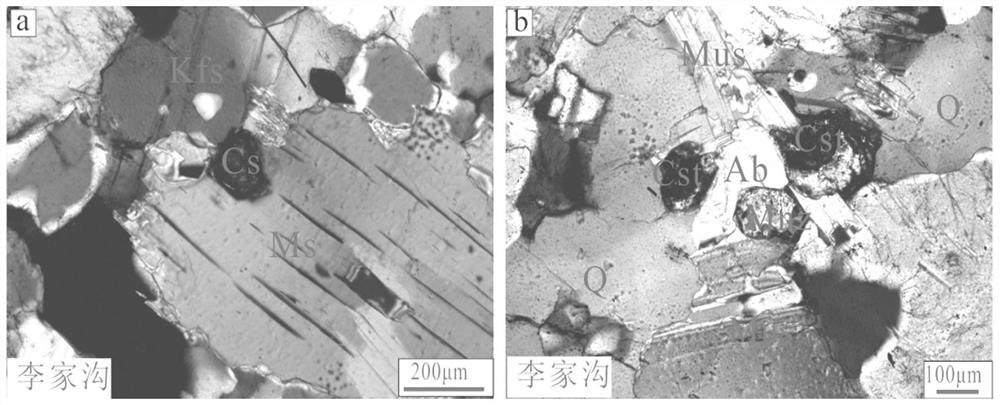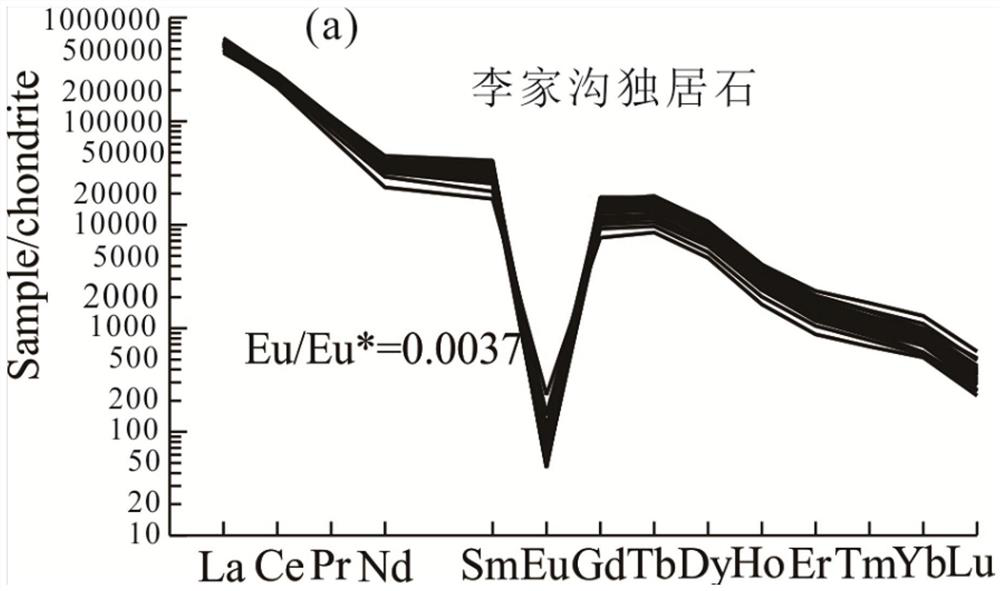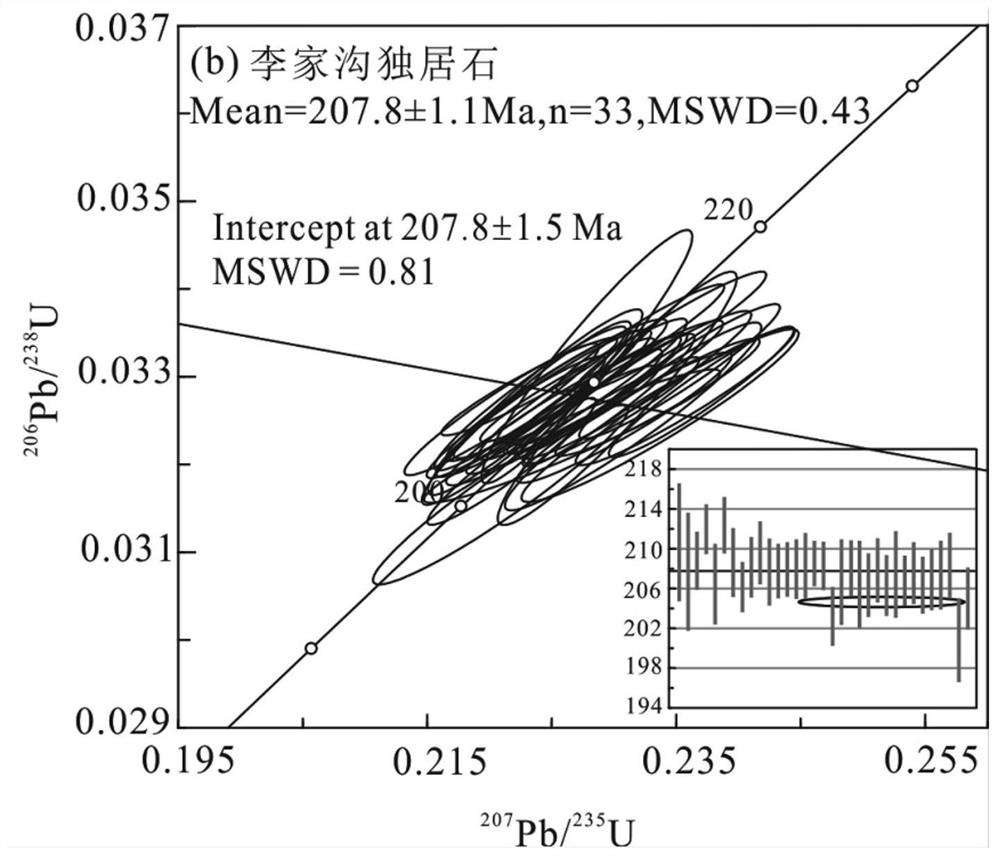Method for determining metallogenic age of rare metal pegmatite
A rare metal and pegmatite technology, applied in the field of chronology, can solve the problems of incomplete application and inaccurate acquisition of rare metal pegmatite mineralization age, etc., to achieve strong applicability, excellent test accuracy, and solve error problems Effect
- Summary
- Abstract
- Description
- Claims
- Application Information
AI Technical Summary
Problems solved by technology
Method used
Image
Examples
Embodiment 1
[0039] This embodiment 1 provides a method for determining the ore-forming age of rare metal pegmatites, which specifically includes the following steps:
[0040] Step (1): Collect rare metal pegmatite samples in the field; specifically collect spodumene pegmatites without obvious structural deformation (spodumene in spodumene pegmatites) from the Lijiagou No. XI ore body in Keryin Ore Field in western Sichuan Stone volume ratio > 15vol%, referred to as Lijiagou sample);
[0041] Step (2): Cut a part of the Lijiagou sample in step (1) into light thin slices with a thickness of 0.3 mm, and observe the monazite rare metal minerals and other rare metal minerals and rock-forming minerals under binoculars. Symbiotic relationship, looking for monazite rare metal minerals with sparse distribution of single particles and particles in interstitial form or contained in primary quartz, feldspar or biotite;
[0042] Step (3): The sample is crushed, washed with heavy sand, and sorted by m...
Embodiment 2
[0061] This embodiment 2 provides a method for determining the ore-forming age of rare metal pegmatites. The difference from embodiment 1 is that the rare metal pegmatite samples in step (1) are specifically collected from the Plum The Genze microplagioclase albite pegmatite in the eastern part of the Jiagou deposit (Genze microplagioclase albite pegmatite contains less spodumene, accounting for less than 3% of the volume, hereinafter referred to as the Genze sample), and the rest of the steps are the same .
[0062] The results of step (2), step (3), step (4) and step (5) in Example 2 show that the root sample contains more cassiterite and monazite of pegmatite magma origin. under the microscope as Figure 5 As shown, cassiterite, monazite (Mnz) and albite (Ab) co-exist in the Genze sample, and the backscattering image observation shows that the single mineral also has the characteristics of pegmatite magma origin. Monazite particles are all larger than 100um (the particle ...
PUM
| Property | Measurement | Unit |
|---|---|---|
| thickness | aaaaa | aaaaa |
| thickness | aaaaa | aaaaa |
Abstract
Description
Claims
Application Information
 Login to View More
Login to View More - R&D
- Intellectual Property
- Life Sciences
- Materials
- Tech Scout
- Unparalleled Data Quality
- Higher Quality Content
- 60% Fewer Hallucinations
Browse by: Latest US Patents, China's latest patents, Technical Efficacy Thesaurus, Application Domain, Technology Topic, Popular Technical Reports.
© 2025 PatSnap. All rights reserved.Legal|Privacy policy|Modern Slavery Act Transparency Statement|Sitemap|About US| Contact US: help@patsnap.com



